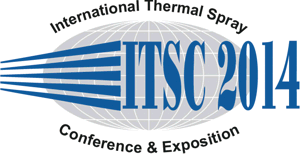
|
3846 |
|
Friday, May 23, 2014, Hall H3 12:00 PM Pre- & Post-Treatment |
|
The effect of (severe) shot peening as pre-/post-treatment on fatigue behavior of cold spray coating |
|
Atieh Moridi* / MIT, MA Seyyed Mostafa Hassani Gangaraj/ Politecnico di Milano & Massachusettes Institute of Technology, Italy, USA Simone Vezzù/ Veneto nanotech scpa, Italy Mario Guagliano/ Politecnico di Milano, Italy |
|
Cold gas dynamic spray or simply cold spray, is consolidating its own role among the conventional thermal spray techniques for low deposition temperature allowing that the coating deposition takes place without exposing the spray or substrate material to high temperatures and in particular, without melting the sprayed particles. Thus, oxidation, large porosity and occurrence of heat affected zones (HAZ) can be avoided. Successful bonding is reported when the powder particles exceed a critical velocity on impact, which is dependent on spray parameters and characteristics of the spray and substrate material. An interesting feature of cold spray coating is that the peening effect of high velocity impacting particles induces compressive residual stresses in which could play an important role in coating durability. This feature could be further strengthened by shot peening (SP) and sever shot peening (SSP) post-deposition treatments, increasing work hardening, density of dislocations and hence expecting a further increase in coating durability. In the present study, gas atomized feedstock particles of aluminum 6082 were sprayed onto the same aluminum alloy substrate using the cold spray deposition technique. Afterwards the coated surface was treated with SP (with 100% of coverage and 4-6 A Almen intensity) and SSP (with 1000% coverage and 6-8 Almen intensity). Micro hardness measurement was conducted on samples cross section. Scanning electron microscopy observation was used to characterize the coating microstructure before and after shot peening. Residual stress measurement has been performed by means of X-ray diffract meter (XRD) on samples both before and after the shot peening process. Adhesion and cohesion tests were also carried out according to standard test methods. Rotating bending fatigue tests has also been performed on coated and shot peened specimens. A critical discussion on the effect of a hybrid treatment on fatigue behavior of aluminum alloy is conducted. |